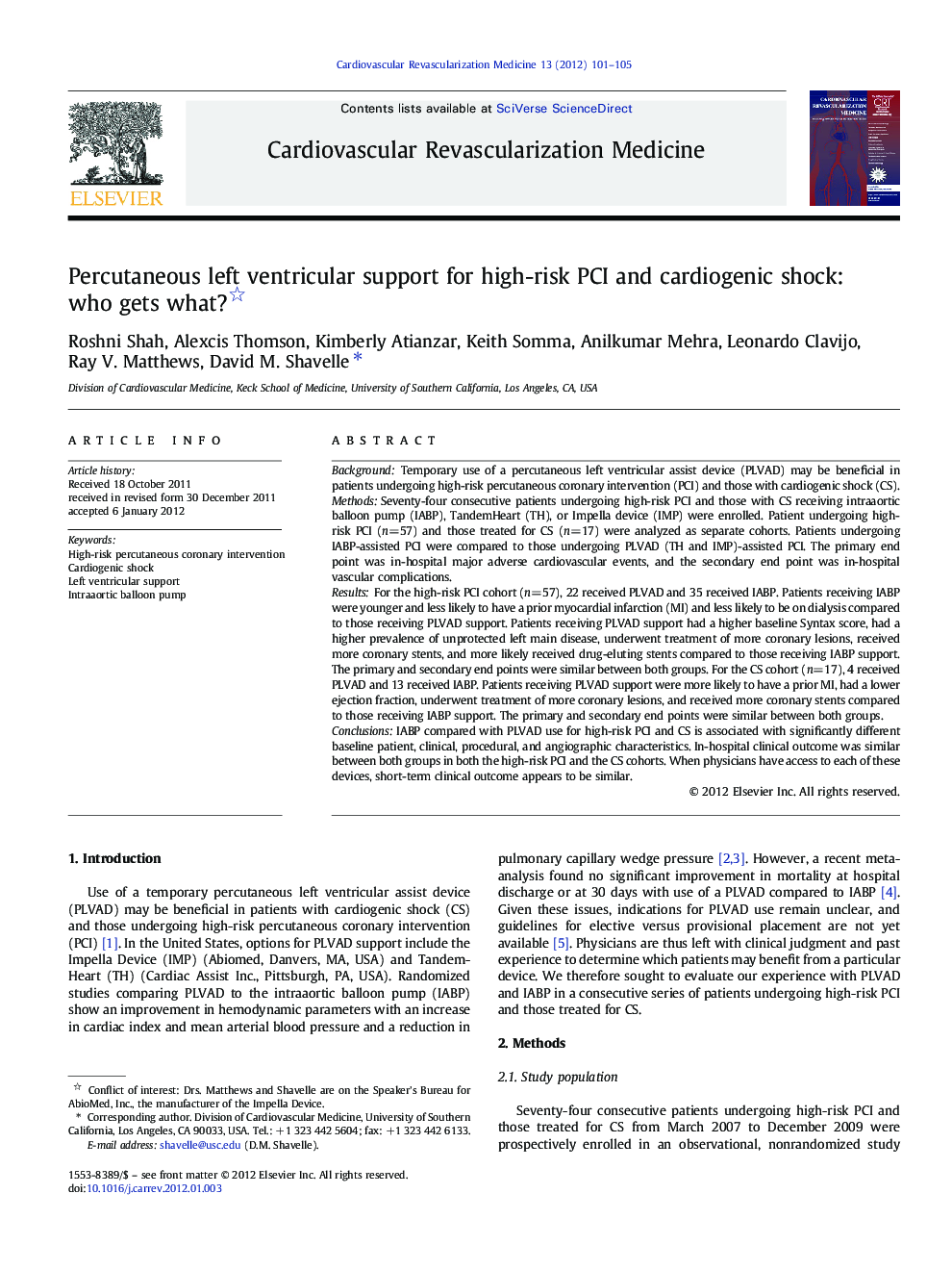| کد مقاله | کد نشریه | سال انتشار | مقاله انگلیسی | نسخه تمام متن |
|---|---|---|---|---|
| 2837266 | 1164895 | 2012 | 5 صفحه PDF | دانلود رایگان |

BackgroundTemporary use of a percutaneous left ventricular assist device (PLVAD) may be beneficial in patients undergoing high-risk percutaneous coronary intervention (PCI) and those with cardiogenic shock (CS).MethodsSeventy-four consecutive patients undergoing high-risk PCI and those with CS receiving intraaortic balloon pump (IABP), TandemHeart (TH), or Impella device (IMP) were enrolled. Patient undergoing high-risk PCI (n=57) and those treated for CS (n=17) were analyzed as separate cohorts. Patients undergoing IABP-assisted PCI were compared to those undergoing PLVAD (TH and IMP)-assisted PCI. The primary end point was in-hospital major adverse cardiovascular events, and the secondary end point was in-hospital vascular complications.ResultsFor the high-risk PCI cohort (n=57), 22 received PLVAD and 35 received IABP. Patients receiving IABP were younger and less likely to have a prior myocardial infarction (MI) and less likely to be on dialysis compared to those receiving PLVAD support. Patients receiving PLVAD support had a higher baseline Syntax score, had a higher prevalence of unprotected left main disease, underwent treatment of more coronary lesions, received more coronary stents, and more likely received drug-eluting stents compared to those receiving IABP support. The primary and secondary end points were similar between both groups. For the CS cohort (n=17), 4 received PLVAD and 13 received IABP. Patients receiving PLVAD support were more likely to have a prior MI, had a lower ejection fraction, underwent treatment of more coronary lesions, and received more coronary stents compared to those receiving IABP support. The primary and secondary end points were similar between both groups.ConclusionsIABP compared with PLVAD use for high-risk PCI and CS is associated with significantly different baseline patient, clinical, procedural, and angiographic characteristics. In-hospital clinical outcome was similar between both groups in both the high-risk PCI and the CS cohorts. When physicians have access to each of these devices, short-term clinical outcome appears to be similar.
Journal: Cardiovascular Revascularization Medicine - Volume 13, Issue 2, March–April 2012, Pages 101–105